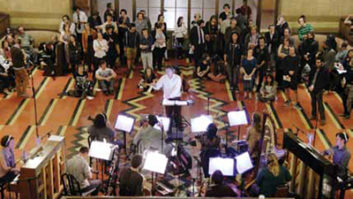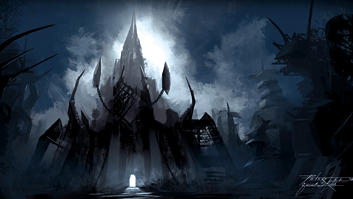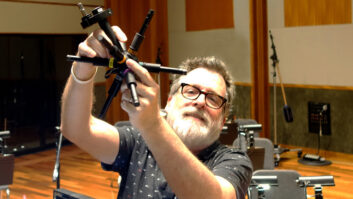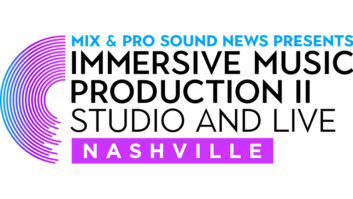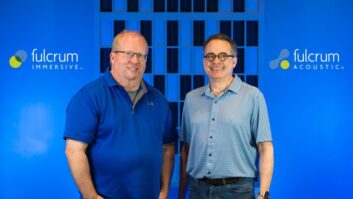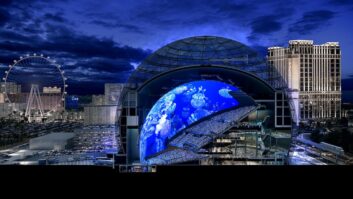Invisible Cities is an immersive opera production held inside Los Angeles’ Union Station with the use of Sennheiser wireless equipment. LOS ANGELES, CA—Denizens of downtown LA’s Union Station waiting room, a number of whom had apparently settled in for the night, appeared somewhat taken aback when several train travelers passing through the area suddenly burst into song late one mid-October evening. As a swarm of people wearing headphones set off in pursuit of the singers, or moved aside as unusually attired performers danced between the rows of seats, it became apparent that this was not to be a typical Thursday night.

The extraordinary event was the final dress rehearsal for Invisible Cities, a collaboration between non-profit production company The Industry and LA Dance Project that is billed as “an invisible opera for wireless headphones.�� Featuring RF technology supplied by Sennheiser, and staged with the technical assistance of Bexel ASG, the 70-minute opera, written by Christopher Cerrone and based on a novel by Italo Calvino, is currently scheduled for a total of 18 performances through November 17.
E. Martin Gimenez, The Industry’s lead sound designer, had the original idea to produce an event on headphones. “I had experienced a silent disco in Edinburgh, and thought it would be great for a performance,” he says.
It was artistic director Yuval Sharon, The Industry’s founder, who came up with the idea of using the platform to stage an opera in a public space. “I really loved the idea of this ambulatory audience, a 360-degree, immersive experience—something that is not typical for opera,” says Sharon.
Needing assistance with the technical challenges associated with staging a wireless opera in and around a busy train station, Sharon approached Sennheiser. “They’ve been a part of this project from the very beginning,” he says. “They’ve taken many trips here, and given us their incredible, very valuable technical assistance and advice every step of the way, from how the audience gets the headphones to the radio frequencies to the experience at large. It’s been an amazing collaboration.”
The Sennheiser team—Stephanie Reichert, Kristy Jo Winkler, Veronique Larcher, Tim Moore and David Missall—oversaw the project and the semi-permanent installation of a range of wireless technology in collaboration with a team from Bexel. Eight channels of Digital 9000 handle the eight singers, each wearing an MKE 1 lavalier mic and SK 9000 bodypack. The principals are double- miked with EM 9046 receivers providing failsafe redundancy. Four SR 2050 twin transmitters feed the singers and dancers, each equipped with an EK 2000 IEM receiver and IE 4 earphones. Two hundred RS 120 wireless headphones deliver the stereo mix to the paying audience.
Andrew McHaddad, chief engineer, Bexel audio division, says of the Digital 9000’s uncompressed digital quality, “The audio processing is fantastic; it sounds like a wired microphone. And the RF sensitivity is very useful for us in this kind of an environment.”
To avoid latency issues, the entire RF monitor system is analog FM, he continues. “That’s the only way to do it in real time without all the talent hearing it late. It would have been unmanageable to do it digitally.”
Mic signals from the 11-piece chamber orchestra set up in a separate building are delivered from a DiGiCo Purple Box over 1,000 feet of fiber, via the basement and a parking lot, to an SD11 console in a room off the waiting area. Engineer Nick Tipp generates various monitor mixes for the featured singers, ensemble, dancers and musicians in addition to the stereo audience mix.
McHaddad also notes, “We had to put in some cascaded limiters and compressors to keep the dynamic range of the orchestra within the range envelope of the [audience] headphone system.” API, Drawmer and proprietary Bexel units provide the processing.
According to David Missall, Sennheiser’s marketing development manager, A5000-CP UHF antennas receive the singers’ mic signals; A2003-UHF antennas transmit the in-ear and headphone mixes. The construction of the building, completed in 1939 and featuring thick walls of steel and chicken wire with leaded glass windows, necessitated the positioning of four antenna farms to comprehensively cover the north and south courtyards, main waiting hall and north hall, he says.
Gimenez is thrilled to have Sennheiser as a partner: “I’m an old school recording engineer; I love my KM 84s and U 87s, so we’ve got plenty of those. We also have some Sennheiser e 914s, on percussion and brass. We’re using 8040s in cardioid pattern as our main ORTF pair.”
He reports that the SD11 desk was selected for its compact size. “The original plan was to set up and strike every day for every show. Thank goodness Union Station and Metro were very generous and let us move into home base and not have to strike every day.”
Although the fiber link from the orchestra can stay in place, he says, some of the antennas and cables must be struck after each performance: “So there’s still a lot of work to do every day for this project.”
Sennheiser
sennheiserusa.com
Bexel
bexel.com
